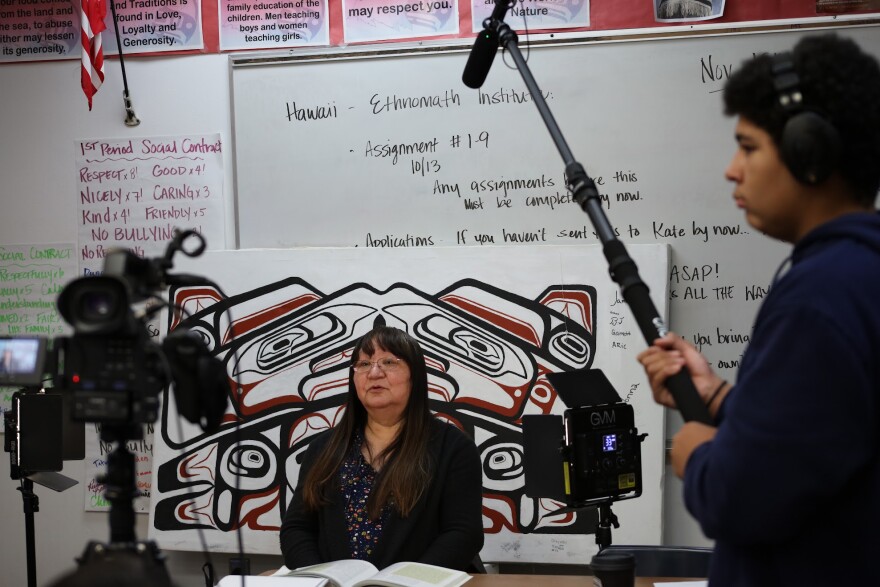An Unangax̂ Elder is bringing the history of her home island to light through a new online zine that highlights the forced evacuation of her community during World War II.
In 1942, the U.S. military removed more than 800 Unangax̂ people from the Aleutian and Pribilof Islands following the Japanese invasion. That included the 83 residents of Atka Island in the Western Aleutians — among them were Barbara Shangin’s parents.
Now, Shangin is honoring this history through her new zine — a handmade-style booklet focused on a single topic — titled “Dear Ancestors and Descendants.”

“The Atkans started the day with fresh fry bread and dried salmon still on their plates, and cups full of steaming coffee,” Shangin read from her zine over the phone. “On this normal morning, they were suddenly uprooted, ordered abruptly by the military to evacuate immediately to their fish camp with no rights as an American citizen.”
The passage from her recent publication recounts the forced relocation of Atka Island.
Shangin, who now lives in Anchorage, said she didn’t grow up knowing much about the evacuation.
She turned to her brother Moses Dirks, an Unangax̂ linguist, to learn more. In the 1970s, Dirks had interviewed their parents about the evacuation, recording their memories in Unangam Tunuu, the language of the region. More recently, he translated those stories into English.
“I was so touched by it — it affected my soul, what they did to them and what they had to endure during that time,” Shangin said. “I decided, I'm going to put my heart into writing about it.”
In 2022, Shangin traveled to Angoon, Alaska, near where the Atka evacuees had been dropped off at an abandoned cannery in Killisnoo. This trip was organized by See Stories, an Anchorage-based nonprofit dedicated to community storytelling.
There, she began her oral history research and interviewed Angoon community members about what they had heard of the forced relocation of her family and other Atka evacuees.
Alongside her research in Angoon, Shangin also participated in virtual and in-person film workshops through See Stories, focusing on sharing these experiences through multimedia formats.
In 2024, she published the zine about her family’s experience. It features original illustrations by her niece Lydia Dirks. The zine will be made available as a free download on the See Stories Teacher Tools website, with printed versions to come.
“If I'm able to tell a story about my community and the trauma they went through, this may help other people that have gone through trauma in their lives,” Shangin said. “And say, ‘Hey, she can write about it. So can I.’ It’s a healing process.”
Shangin continues to develop a book project in addition to her completed zine. Through this work, she said she hopes to continue sharing Indigenous perspectives on WWII history and make space for healing.
Shangin’s oral history research and zine publication were supported by the Rasmuson Foundation, Alaska State Council on the Arts, National Historical Publications and Records Commission, and the Charlotte Martin Foundation.






